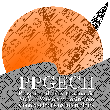Banca de QUALIFICAÇÃO: Mauricio Mattar
Uma banca de QUALIFICAÇÃO de MESTRADO foi cadastrada pelo programa.DISCENTE : Mauricio Mattar
DATA : 19/06/2023
HORA: 08:00
LOCAL: Sala Virtual - Meet
TÍTULO:
THE TIME TO DO AND THE TIME TO DO BY THE KAMAYURA PEOPLE
PALAVRAS-CHAVES:
Ethnoscience Kamayura; Kamayura Culture; Kamayura Education; Time Kamayura.
PÁGINAS: 78
GRANDE ÁREA: Outra
ÁREA: Ensino
RESUMO:
The Apyap Kamayura people (Tupi Guarani linguistic trunk) traditionally inhabit the south bank of the Ypawu lagoon, in the Xingu Indigenous Land, in a region called Alto Xingu, in the municipality of Gaúcha do Norte, MT. The Apyap/Kamayura observe nature to find out what time of year it is, because, for them, nature's signs indicate the time. Since their existence, these people have used the phases of the stars, the sky, the sun, the moon and astronomical phases as markers of time. The traditional calendar, that is, the signs of our people's nature, is used to mark the phase of drought and rain, the time to plant the fields, the time to start and harvest the crops, the flowering and fruiting of the trees, the carrying out festivals and rituals in the village, the collective fishing of our people, the burning of the fields, the passage from one year to the next, among other activities. Among time markers, the most important is the use of star phases. All the stars that mark time, the flowering of plants have a name in the Kamayura language. When a star appears on the horizon, to the east, the people observe and know the sign that will determine the realization of activities in the village, that is, each appearance of a sign of nature is related to a certain time of year and with the activities carried out in the community. . The objective of this research was to record information about the Kamayura time markers through the study. Specifically, it was intended: (a) to identify the period of appearance of each star; (b) record the names of the main signs of nature that mark time; (c) identify the activities carried out in the community according to the appearance of the indicator stars; (d) record the knowledge of the elders to pass on to future generations. This work is part of the master's course research. The work is important because it has never been studied and recorded. In addition, this research intends to strengthen the use of the traditional calendar and also disseminate the research to other indigenous and non-indigenous societies in Brazil.
MEMBROS DA BANCA:
Presidente - 86016007 - ADAILTON ALVES DA SILVA
Interno - 45557013 - JOÃO SEVERINO FILHO
Interno - 34875013 - LUCIMAR LUISA FERREIRA
Externo à Instituição - LORENA DALL'ARA GUIMARÃES - UFG



